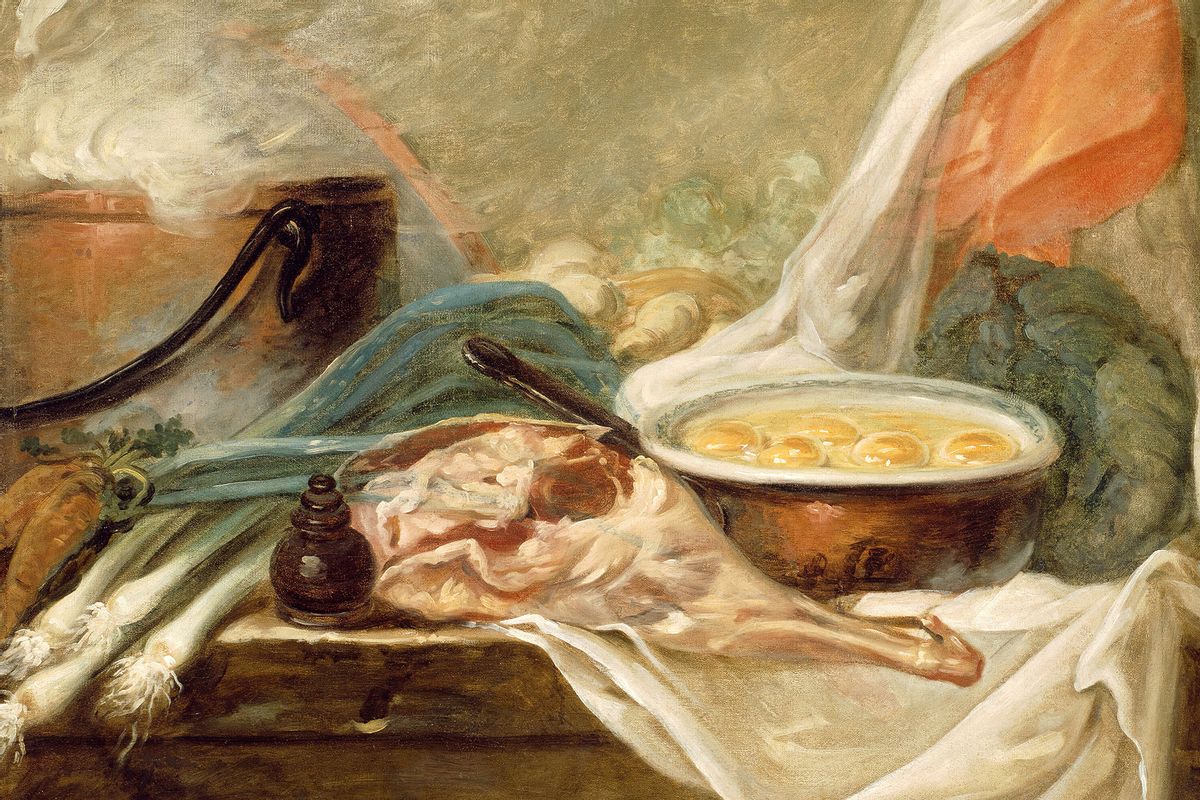Eggs, albeit simple, are a versatile ingredient both in and out of the kitchen. They're a tasty breakfast staple that can be enjoyed poached, scrambled, soft-boiled or hard-boiled. They're at the center of the age-old question, "What came first, the chicken or the egg?" and the classic idiom, "Egg someone on." And, most fascinatingly, they're the subjects of art, music, film and fashion.
From Jean-Baptiste Greuze's 1756 painting "Broken Eggs" and Claude Monet's 1907 painting "Still Life with Eggs" to Giovanni Battista Recco's "Still Life with Chickens and Eggs" and the Yeah Yeah Yeahs' cover art for their 2009 studio album "It's Blitz!," there's no shortage of egg iconography. Within the realm of art, eggs are a complex motif due to their significance in both Christian cultures and international mythology.
Simply put, an egg is more than just food — it is "a symbol and a shape-shifter… an industry and an inspiration, a millennia old, cross-cultural expression of rebirth, fertility and potential," per a forthcoming book called "The Gourmand's Egg. A Collection of Stories and Recipes."
Written by David Lane and Marina Tweed of the London-based contemporary food and culture journal "The Gourmand," the latest publication explores this phenomenon through a collection of images, stories and recipes focused on eggs. There's also a section devoted to egg accessories, further illustrating how a single object became so prominent in various sectors of culture.
Perhaps the earliest mythological motif of eggs is the cosmic, or world egg, which deems that the universe came into existence via a hatched supreme egg. The idea was first documented around 1500 BCE in Sanskrit scriptures, and in myths from Australia, China and Greece — just to name a few. Eggs then became a symbol of celebration, specifically amongst the Persian Empire who decorated, shared and ate eggs amid the spring equinox. This eventually became the basis of classic Easter traditions. Today, eggs at Easter are commonly painted and dyed; then shared, via egg hunts and egg rolls; and later enjoyed, oftentimes as chocolate molds and, in some regions, as marzipan.
Egg references are also frequent in the Bible (notably in Job 6:6, Luke 11:12 and Isaiah 10:14), Eastern Orthodox traditions and Jewish traditions, both in stories and food.
"Given that an egg's meaning is as varied as the ways in which it can be cooked, it's unsurprising that it has featured so frequently in art history, and not only as a subject," the book noted. Egg tempura, a concoction of pigment, egg yolk and vinegar, was a popular — although putrid — medium amongst painters across Europe. And egg whites mixed with salt was a common method of producing photographs until the early 20th century, when silver gelatin prints became the go-to.
Eggs were first showcased in art during the Renaissance, when various paintings inserted the food in religious, historical and domestic scenes. Take for example Piero della Francesca's Brera Madonna (1472–1474), in which an ostrich egg hangs above a group of saints and angels who surround the Virgin Mary and the sleeping Christ Child on her lap. Here, the egg is a symbol of both creation and purity.
"There is an egg hanging at the centre of the Brera Madonna that represents Mary's fecundity as well as the promise of immortality and regeneration," explained TheHistoryOfArt.org, an online website covering art history. "The child is wearing a necklace of red coral beads, which is a colour that alludes to blood. The deep red coral beads [are] a symbol of death and life as well as the redemption that was brought by Jesus Christ."
There's also Hieronymous Bosch's triptych oil painting "The Garden of Earthly Delights" (c.1490–1510), which portrays yet another floating unhatched egg that is "a symbol of unrealised hope, or potential, in the midst of riotous human folly."
Want more great food writing and recipes? Subscribe to Salon Food's newsletter, The Bite.
Years later, eggs took on more erotic meanings. In Jean-Baptiste Greuze's aforementioned painting "Broken Eggs" (1756), a glum, young servant girl sits next to a basket of broken eggs, which many critics interpreted as an allegory about the loss of virginity and innocence. Egg yolks have also been portrayed as breasts, notably in Vicki Hodgetts's "Eggs to Breasts" and Sarah Lucas' "Self Portrait with Fried Eggs."
Such representations and motifs are also common in recent artwork and cinema. Onscreen eggs have been spotted in Luca Guadagnino's "Call Me by Your Name," Guillermo del Toro's "The Shape of Water" and Paul Thomas Anderson's "Phantom Thread."
As "The Gourmand's Egg" wrote, "The egg is a cinematic chameleon. In its many filmic incarnations, it has been a token of brotherly love, a Freudian red flag, a portent of a ghoulish presence, a symbol of life or, simply, a hangover cure."
Additionally, "as in so many pictures, the egg often features not only as an everyday foodstuff but as a container of myriad meanings. To paint an egg is to fuse simplicity of form and shape with the resonances around mortality that lurk at the heart of still life."



Shares